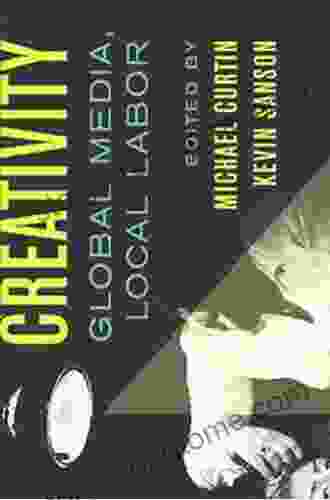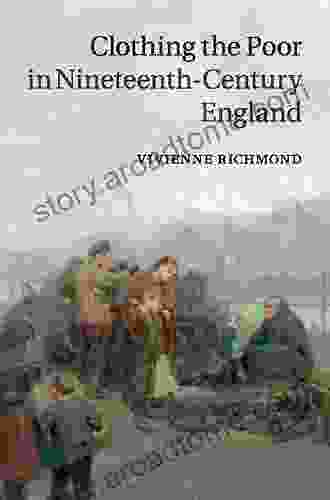Clothing the Poor in Nineteenth Century England: A Journey Through History

4.5 out of 5
| Language | : | English |
| File size | : | 4391 KB |
| Text-to-Speech | : | Enabled |
| Screen Reader | : | Supported |
| Enhanced typesetting | : | Enabled |
| Word Wise | : | Enabled |
| Print length | : | 362 pages |
In the bustling streets of Victorian England, amidst the grandeur and opulence of the wealthy elite, a stark contrast could be found in the lives of the poor. For these individuals, clothing was not merely a matter of fashion or adornment; it was a fundamental necessity for survival.
The Industrial Revolution, which had transformed England's economy, had also created a vast underclass of impoverished workers. With wages barely enough to sustain their families, the poor struggled to afford even the most basic necessities, including clothing.
The plight of the poor was exacerbated by a lack of government assistance. In the early 19th century, the prevailing belief was that poverty was a personal failing, and that individuals were responsible for their own well-being. As a result, there was little official support for those who could not provide for themselves.
In the absence of government aid, the burden of clothing the poor fell largely on private charities. These organizations, often run by religious groups or wealthy philanthropists, provided clothing to the needy through a variety of means, including soup kitchens, workhouses, and orphanages.
One of the most common ways that charities provided clothing was through the distribution of cast-off garments. Wealthy individuals would donate their old clothes to churches or other organizations, which would then distribute them to the poor. These garments were often worn and threadbare, but they were better than nothing for those who had no other options.
Another way that charities provided clothing was through the establishment of workhouses. Workhouses were institutions where the poor could live and work in exchange for food, shelter, and clothing. The clothing provided in workhouses was typically simple and utilitarian, consisting of a uniform that identified the wearer as a pauper.
Orphanages also played a role in clothing the poor. These institutions provided care and shelter to children who had lost their parents or guardians. The clothing provided in orphanages was often similar to that provided in workhouses, but it was sometimes more colorful and cheerful.
In addition to charities, there were also a number of commercial enterprises that catered to the needs of the poor. These businesses, known as slop shops, sold cheap, ready-made clothing that was affordable for even the poorest of customers.
The clothing sold in slop shops was often of poor quality and made from flimsy materials. However, it was a valuable resource for the poor, who had no other way to obtain clothing. Despite its shortcomings, slop shop clothing helped to keep the poor warm and covered, and it played an important role in their daily lives.
The clothing of the poor in 19th century England was a reflection of the harsh realities of their lives. It was often threadbare, patched, and mended, but it was a testament to their resilience and their determination to survive.
Today, the clothing of the poor in 19th century England serves as a reminder of the challenges faced by the most vulnerable members of society. It is a reminder of the importance of compassion and of the need to work together to create a world where everyone has the opportunity to live a dignified life.
4.5 out of 5
| Language | : | English |
| File size | : | 4391 KB |
| Text-to-Speech | : | Enabled |
| Screen Reader | : | Supported |
| Enhanced typesetting | : | Enabled |
| Word Wise | : | Enabled |
| Print length | : | 362 pages |
Do you want to contribute by writing guest posts on this blog?
Please contact us and send us a resume of previous articles that you have written.
 Book
Book Novel
Novel Page
Page Chapter
Chapter Text
Text Story
Story Genre
Genre Reader
Reader Library
Library Paperback
Paperback E-book
E-book Magazine
Magazine Newspaper
Newspaper Paragraph
Paragraph Sentence
Sentence Bookmark
Bookmark Shelf
Shelf Glossary
Glossary Bibliography
Bibliography Foreword
Foreword Preface
Preface Synopsis
Synopsis Annotation
Annotation Footnote
Footnote Manuscript
Manuscript Scroll
Scroll Codex
Codex Tome
Tome Bestseller
Bestseller Classics
Classics Library card
Library card Narrative
Narrative Biography
Biography Autobiography
Autobiography Memoir
Memoir Reference
Reference Encyclopedia
Encyclopedia Linda Byler
Linda Byler Sj White
Sj White Leon Festinger
Leon Festinger Liz Dobbs
Liz Dobbs Susanna Mittermaier
Susanna Mittermaier Lynn Austin
Lynn Austin Mirko Trenkner
Mirko Trenkner Lynn Mcdonald
Lynn Mcdonald Laura Mauldin
Laura Mauldin Melanie Rothschild
Melanie Rothschild Lee C Camp
Lee C Camp Leisa Cadotte
Leisa Cadotte Laurence Ferry
Laurence Ferry Lisa Firth
Lisa Firth Marion Dane Bauer
Marion Dane Bauer Lorna Byrne
Lorna Byrne Onovo Victory
Onovo Victory Lonnie Hull Dupont
Lonnie Hull Dupont Lee Carroll
Lee Carroll Lynn B Hoeltke
Lynn B Hoeltke
Light bulbAdvertise smarter! Our strategic ad space ensures maximum exposure. Reserve your spot today!

 Isaiah PowellTen Commandments for Pastors Leaving Congregation: A Guide to a Graceful and...
Isaiah PowellTen Commandments for Pastors Leaving Congregation: A Guide to a Graceful and... Vic ParkerFollow ·15.2k
Vic ParkerFollow ·15.2k Sammy PowellFollow ·16.1k
Sammy PowellFollow ·16.1k Colin FosterFollow ·2.9k
Colin FosterFollow ·2.9k Lucas ReedFollow ·16.1k
Lucas ReedFollow ·16.1k James GrayFollow ·13.7k
James GrayFollow ·13.7k Esteban CoxFollow ·17.6k
Esteban CoxFollow ·17.6k Earl WilliamsFollow ·2.3k
Earl WilliamsFollow ·2.3k Maurice ParkerFollow ·2.3k
Maurice ParkerFollow ·2.3k

 E.M. Forster
E.M. ForsterThe Real Blueprint to Short-Term Rental Success
Are you ready to create a...

 Mark Mitchell
Mark MitchellMidas Touch: The Astrology Of Wealth
Are you ready to tap into the cosmic forces...

 Grant Hayes
Grant HayesPrecarious Creativity: Unpacking the Global Media and...
In the ever-evolving landscape of the...

 Cameron Reed
Cameron ReedGuru Govind Singh: A Life of Courage and Inspiration for...
Guru Govind Singh, the tenth Sikh guru,...

 Yukio Mishima
Yukio MishimaCastles & Shapes: The Enchanting World of Ris...
In the realm of...

 Jerome Blair
Jerome BlairGolden Keys To Jyotisha Volume Ten: The Ultimate Guide to...
Embark on an...
4.5 out of 5
| Language | : | English |
| File size | : | 4391 KB |
| Text-to-Speech | : | Enabled |
| Screen Reader | : | Supported |
| Enhanced typesetting | : | Enabled |
| Word Wise | : | Enabled |
| Print length | : | 362 pages |










